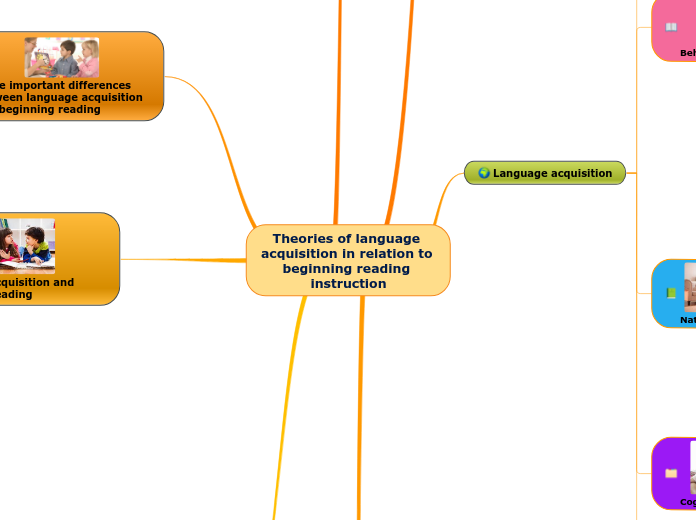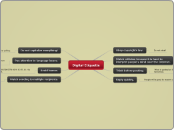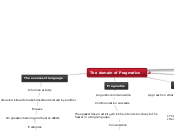Theories of language acquisition in relation to beginning reading instruction
Describe the main activities you did this summer and mention the places you have visited and the people who have been with you this summer.
An assessment of the theories
Making a language component central requires postulating a strong innate predisposition.
Language acquisition is achieved through processes such as association and response generalization.
Older behavioral learning theories hold that the environment is extremely important in providing linguistic stimuli.
Type in the name of a friend that spent time with you during the summer break.
The studies reported by McCarthy encompass massive quantities of data but lack clearly defined theories of language acquisitions
All such theories have weaknesses of lack of detail and lack of empirical validation.
Concern for such theories is a fairly recent development in studies of language acquisition.
Language acquisition and beginning reading
Language acquisitions after age six
There is also some agreement that children do not interpret “same” and “different” in the way that mature adults do, nor are they able to work in a conscious analytic fashion with language, as many adults can.
Numerous investigators have shown that significant language development still occurs in all children after the age of five or six
Two linguistic abilities that children of about age six appear to have are those to over discriminate and to overgeneralize.
Place
Some important differences between language acquisition and beginning reading
Who are the people with whom you spent your summer break?
Language is acquired gradually and the acquisition process is probably never completed, for something always remains to be learned.
Language, however, is learned informally and unconsciously from a widerange of stimuli.
No deliberate instruction is necessary
Reading instruction is very formal and deliberate.
Type in the name of a relative that spent time with you during the summer break.
Conclusion
Language acquisition theories are irrelevant with: the initial teaching of reading or even for designing models of the reading process.
Reading methods themselves are almost unrelated to theories of language acquisition.
Much of what is taught “about” language in such methods is antiquated and not very useful to anyone, particularly to six-year olds.
Some language skills apparently derive from the acquisition of literacy skills.
Controversial issues
The function of meaning in language acquisition
Non-linguistic experience
Linguistic experience
Cognitive-perceptual development,
Add a picture with you doing that activity or choose a suggestive image from the internet.
The child's semantic competence is more differentiated than the surface forms of his utterances.
Bloom indicates that semantic competence outstrips syntactic competence.
The semantic and conceptual aspects of grammatical classes are important.
The role of expansion
When a child hears an adult expansion of his own speech, he learns something important about the structure of his language.
The frequency of children's speech expansion is related to variables such as social class and education.
Expansions might be helpful in stimulating linguistic development
Parents correct and amplify their children's speech.
The place of imitation
The language of the environment in which the child is found is important for language acquisition.
Ervin shows that children's imitations are not grammatically progressive.
Menyuk points out that the ability to imitate depends on the acquisition of some prior ability.
Imitation in the sense of modeling occupies an important place in behavioral theories of learning.
The frequency of stimuli
Slobin argues that the child’s cognitive and mental capacities at each stage regulate his ability to learn.
McNeill argues that the structure of language and of the child’s mind controls learning.
The child should first acquire the most frequently occurring words and structures in the language.
The relative frequency of stimuli must be important in any behaviorist theory of learning.
Describe that activity in a few words.
How much time did you spend doing that activity?
How did you feel doing that activity?
Language acquisition
What are the places you visited this summer?
Linguistically - oriented theories versus learning - oriented theories
The child acquires a generative-transformational grammar.
Cognitive theories
Sinclair-de-Zwart (1968)
Linguistic universals exist precisely because thought structures are universal.
Cromer (1968)
Provides further evidence of the role of cognitive abilities in determining the language the child can use.
McNeill
Uses such data to postulate the presence of innate linguistic principles.
Fodor (1966), Slobin (1966a, 196613)
The child is not born with a set of linguistic categories.
Nativist theories
N. Chomsky (1957, 1965)
LAD Language Acquisition Device: It is the ability to distinguish the sounds of speech from other sounds in the environment.
McNeill (1966, 1968, 1970a, 1970b)
Developmental theories must be related to particular grammatical analyses.
Lenneberg (1967)
Proposes a theory of language acquisition heavily buttressed by biological evidence.
Behavioristic theories
Braine (1963a, 1963b, 1965)
This theory implies the principle of contextual generalization.
Weksel (1965)
The stages of language learning cannot be generalized.
N. Chomsky (1957)
Criticizes for being inadequate in that it does not account for the abstract nature of linguistic knowledge.
Jenkins and Palermo (1964)
They propose that the child learns the stimulus and response equivalences that can occur in the frames.
Garrett and Fodor (1968)
Language facts are abstractions that children must acquire from masses of highly variable data.
Staats and Staats (1962,
1963, 1968)
Extinction, discrimination and generalization to explain how language is acquired.
N. Chomsky’s devastating review (1959)
Theories of language are inadequate for almost any purpose. Chomsky is particularly critical of Skinner’s.
Verbal Behavior (1957)
Specific linguistic behaviors are acquired through conditioning.
Atheoretical studies
Type in the name of a place you visited this summer.
Menyuk (1969)
Certain stages can be observed such as babbling ends at around 18 months.
N. Chomsky (1965)
Language acquisition should focus on such as increasing complexity and development of competencies.
Klima and Bellugi (1966)
Sentence patterns, or the ability to combine words and patterns.
Brown and Bellugi (1964)
The case studies have a single phonological, grammatical or semantic distinction.
McCarthy
Children's language has stages full of errors and deficiencies.
Introduction
What are the activities you did during the summer break?
The particular focus is syntax acquisition.
The purpose is to explain and evaluate the main theories of language acquisition and relate these theories with the initial teaching of reading.
The document is about language acquisition.
Type in the name of an activity you did this summer.









